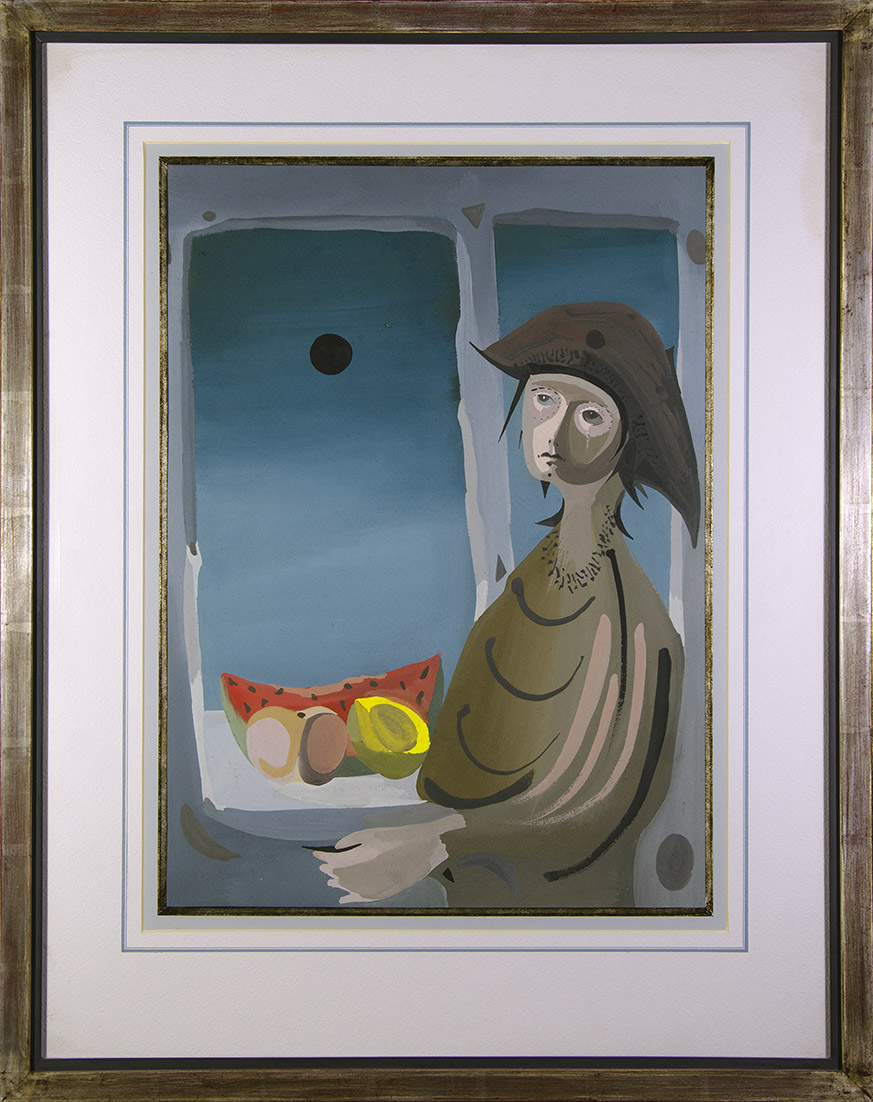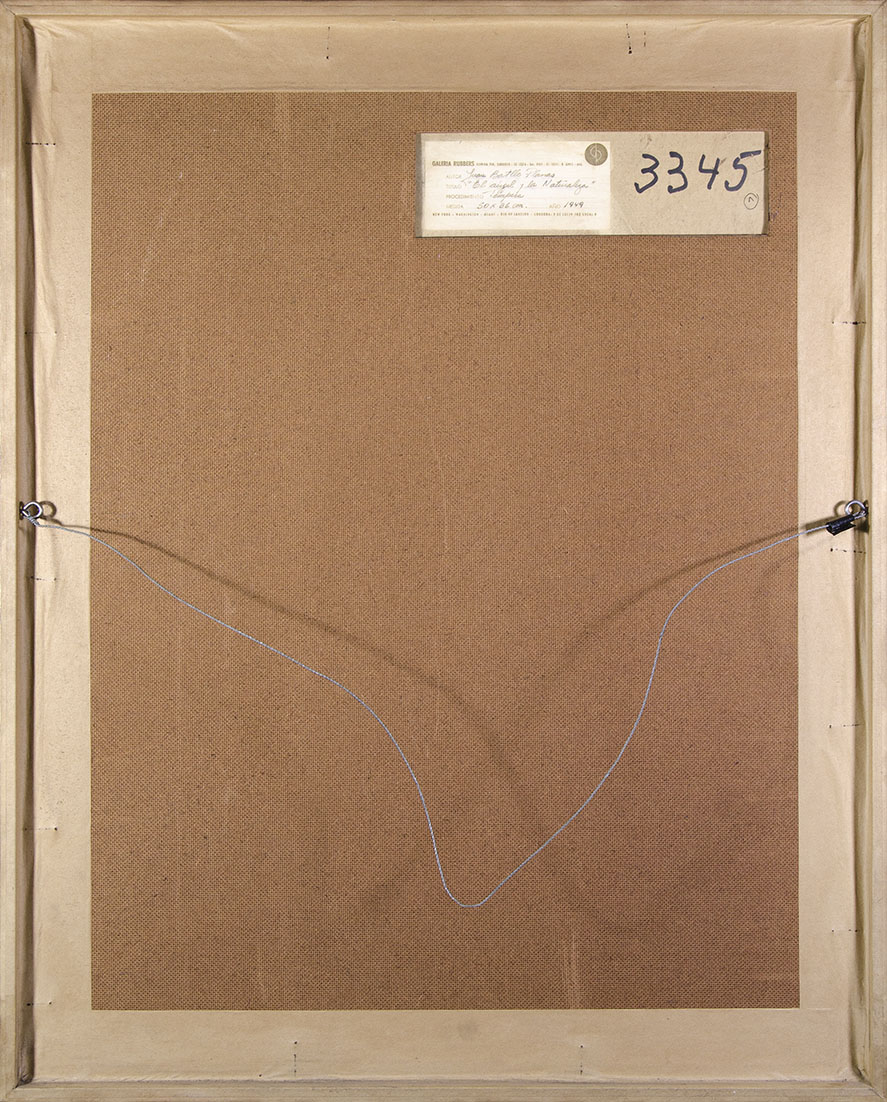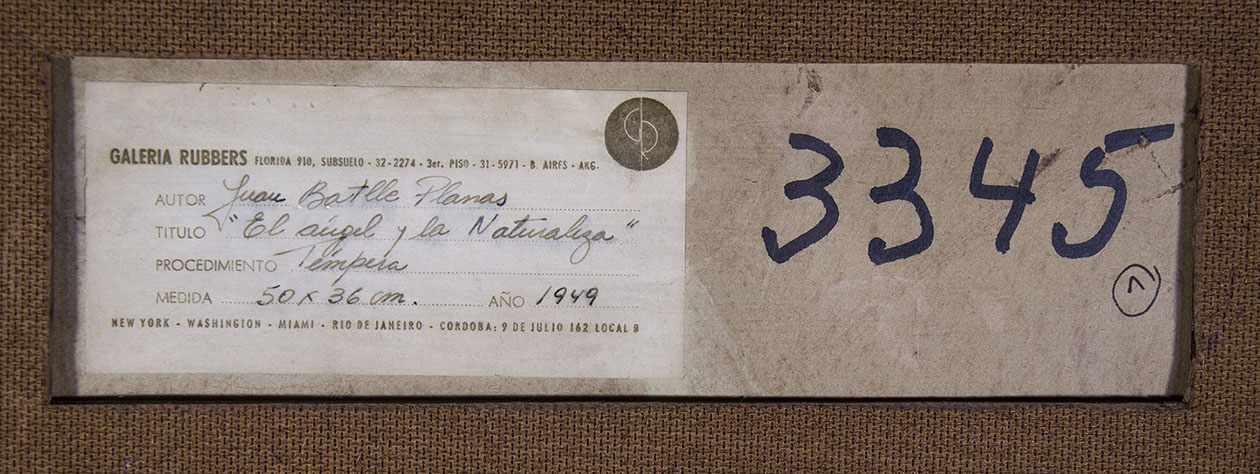BACK TO TOP
ART
The angel and nature. 1949.
Tempera on paper. Measurements: 50 x 36 cm. On the back is an exhibition card from the Rubbers Gallery. Framed work, in excellent condition.
A mysterious character stands before a window. In front of him an apple, a lemon and a slice of watermelon make up a colorful still life. However, this being is not attentive to the fruits, his gaze is directed to a black star in the sky. Everything is symbolic in the work of Battle Planas. Observe a subtle ornamentation in the neck and in the hat of our protagonist, it seems an ancient, Sumerian or Hebrew writing. In the years of this painting, interested in numerology, he developed the series The Mechanisms of Number (1948). From these same years is his deepening in the theories on human energy, the body schema and the Psychology of form. Rosa María Ravera [1] writes: “After a crisis that overwhelmed him due to the fantasmatic intensity of his creations, he embraced the influences of Form Psychology and agreed to the appearance of the sensible in the outside world. (...) The continuity of successive renovations reveals the incidence of mystical and symbolic texts of highly varied origin, with aesthetic initiatives on nature and a characteristic type of figuration influenced by Dutch imagery (...)”. Also from that decade of the 40s is the creation of a particular character that will accompany him for years, the Noicas, female figures that were a cross between muses, girls and inspiring angels. This is one of those. This angel-noica dialogues here with Nature, in a broad sense, with the nature of things. He observes the black star in the sky, a black cosmic circle, a pure representation of the form, and in his hand he holds a semicircular object, also black.
Juan Batlle Planas (Torroella de Montgrí, Girona, 1911 - Buenos Aires, Argentina, 1966) was an Argentine painter of Spanish origin linked to surrealism and symbolism, and displayed a spiritualist content influenced by Zen philosophy, psychoanalysis and the psychology of the shape. His approach to art was influenced by his uncle José Planas Casas, born in Torroella de Montgrí itself. His most notorious technique is tempera on paper, and generally in small formats. Around the 1930s he developed his series of “Paranoid X-rays”, between 1946 and 1950 the character present here, his Noicas, was born, to conclude in a symbolic non-figuration. In 1959 an exhibition was held at the National Museum of Fine Arts in Buenos Aires with 106 of his works and the following year he received the Palanza Award from the National Academy of Fine Arts.
Note:
1. Rosa María Ravera, “Notes on Juan Batlle Planas”, in Batlle Planas, persistent image. Catalog of the exhibition held at the Alón Foundation, October / December 2006, Buenos Aires.
| AUTHOR | JUAN BATTLE PLANAS |
|---|
Are you interested in selling some works?
Send us an email briefly indicating
which works you intend to put on sale, and we will respond. click here
Subscribe to our newsletter to be updated.
Check our Newsletters

